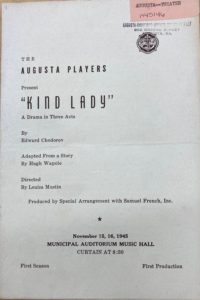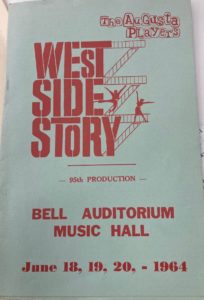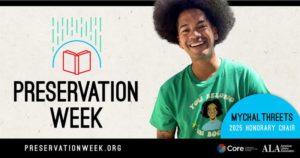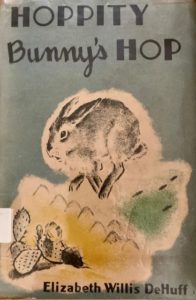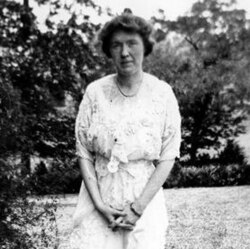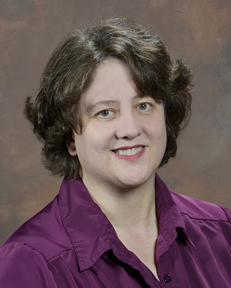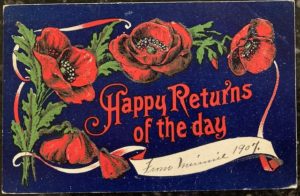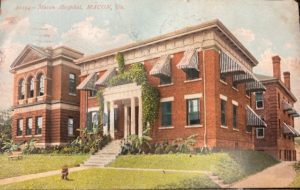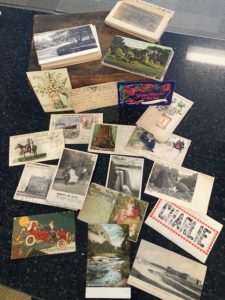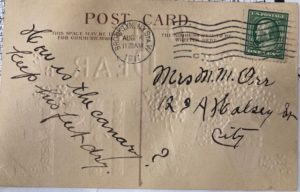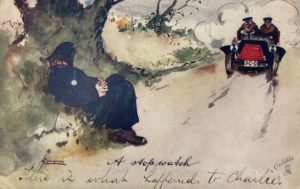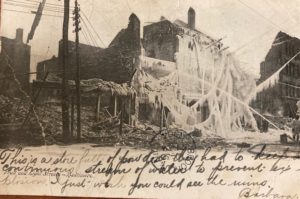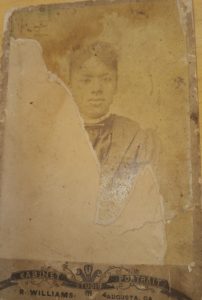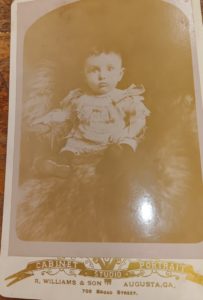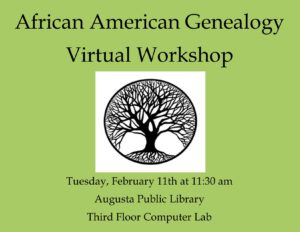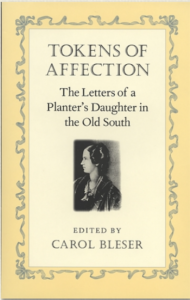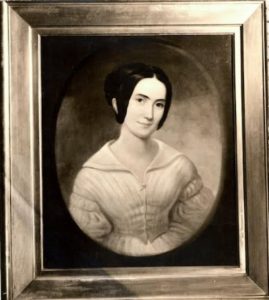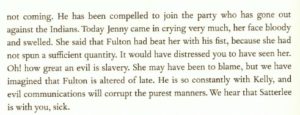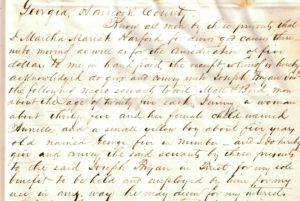Eighty years. Imagine looking for your permanent home for eighty years. What a housewarming you would throw.
And the Augusta Players had their housewarming with all the trimmings this May 9, 2025. They cut the red ribbon and let in the neighbors to see the success of their renovations; 6 office spaces, three rehearsal rooms, a full scenic workshop, and a costume and prop room.
When the Augusta Players started in 1945 they had no place to rehearse or perform. Their locations ran the gamut from the Bon Air ballroom to a converted fire station on Ellis St. with many a stop at a school along the way. Members felt that lack of a playhouse kept people from their performances. Some time in September 1961 they were considering a warehouse conversion for $6000; the money to be raised from the sale of season tickets. For whatever reason, this first attempt at setting up house didn’t come to fruition.
However, a 1963 agreement with the school system allowed them the use of an old chapel at 3112 Lake Forest Drive. There was room for a small theatre and by March 1963 the backstage crew was preparing the new playhouse for the opening of “Will Success Spoil Rock Hunter.” Christening it the Augusta Players Playhouse the Augusta Players marked their 100th production – the play in question being “The Tempest – at this location. Many of the main company’s dramatic productions took place here. 1965 started the run of productions and workshops for the Augusta Player’s Children Theater. The musicals, due to the numbers of cast and crew had to trek over to the Bell Auditorium or the Imperial Theatre so the quest for rehearsal space and performing venue was not quite ended.
But the Augusta Players Playhouse turned out to be in a rental home so to speak. For whatever reason, the group moved from 3113 Lake Forest Drive to 1399 Walton Way at the old Lawton B. Evans school in 1984. William T. Gary bought the Modjeska Theatre in 1966 as a home for the group, but the theatre was sold again in 1993. But by 1995, the Players were out on their ear again. Homeless once again, the group hoped for a new Broad Street theatre but Augusta’s budget crisis would cancel the project.
In 1996, amid fears of renting venues and cutting back on the number of productions, the Augusta Players managed to land at Westside High School to do a two-weekend production of “Steel Magnolias” Imagine the stress of coordinating four programs or rehearsals at four separate sites. They were on the road. In September of 1997 the group negotiated an agreement with the Imperial Theatre to shift its last two shows of the season in return for producing two shows in the summer of 1998 with profits going to the imperial.
The Imperial didn’t promise rehearsal space however and finding a spot to rehearse was still an issue in June 2000. The Episcopal Day School and the Church of the Good Shepherd provided rehearsal space but it didn’t make up for rehearsing on a stage. 24 more years would pass until the Players were no longer tenants but proprietors, having this wonderful space where all functions are under one roof.
The cost of all that bouncing around took a toll on the preserving of the organization’s history. In 1995, the 50th season of the Augusta Players the hope was to stage a new show of the original production of “Kind Lady” It couldn’t happen, a copy of the script couldn’t be found. All the records for the years 1945-1983 fit in one box.
Hopefully, the missing records migrated out of dusty attics and back to the Augusta Players in time for them to move to their new home.in 2025.
But if not, you can still get a taste of those earlier days by coming to use three collections in the Georgia Room of the Augusta-Richmond County Public Library.
MS 57 The Augusta Players Programs cover the years 1945 to 1972 and show what productions were done in this time period. MS 63 The Youth Theatre of the Augusta Players Programs from 1966-1968 touch on the earliest days of the Augusta Junior Players. MS 65 The Augusta Player’s Newsletter is a single item which gives the tiniest glimpse of the backstage life of the Augusta Players.

